
Getting your baby dressed for sleep can feel overwhelming with so many options available! The right sleepwear not only keeps your little one comfortable but also ensures their safety throughout the night.
Are you wondering which fabrics work best for sensitive skin? Or perhaps you’re confused about TOG ratings and seasonal considerations? Maybe you’re trying to transition from swaddling to sleep sacks?
From breathable cotton onesies to wearable blankets, the perfect sleep solution depends on your baby’s age, room temperature, and personal preferences.
Join us as we explore the world of baby sleepwear, offering practical tips and recommendations for your child from newborn to toddlerhood.
What’s your biggest challenge when dressing your baby for sleep?
The Sweet Spot: Finding the Perfect Sleep Temperature
Did you know babies sleep best in rooms between 68℉ and 72℉? This might feel slightly cool to you, but it’s perfect for them.
Not every home stays at this ideal temperature. Maybe you live in Arizona, where it’s blazing hot, or Maine, where winters bring freezing temperatures. Your heating and cooling systems might vary, too.
Pro Tip: Get a simple room thermometer to keep track of the nursery temperature. Place it away from windows or heating vents for the most accurate reading.
The good news is that you don’t need to stress about hitting exactly 70℉. The key is dressing your baby appropriately for whatever temperature your home naturally maintains.
Baby Sleep Clothes: Keeping It Simple
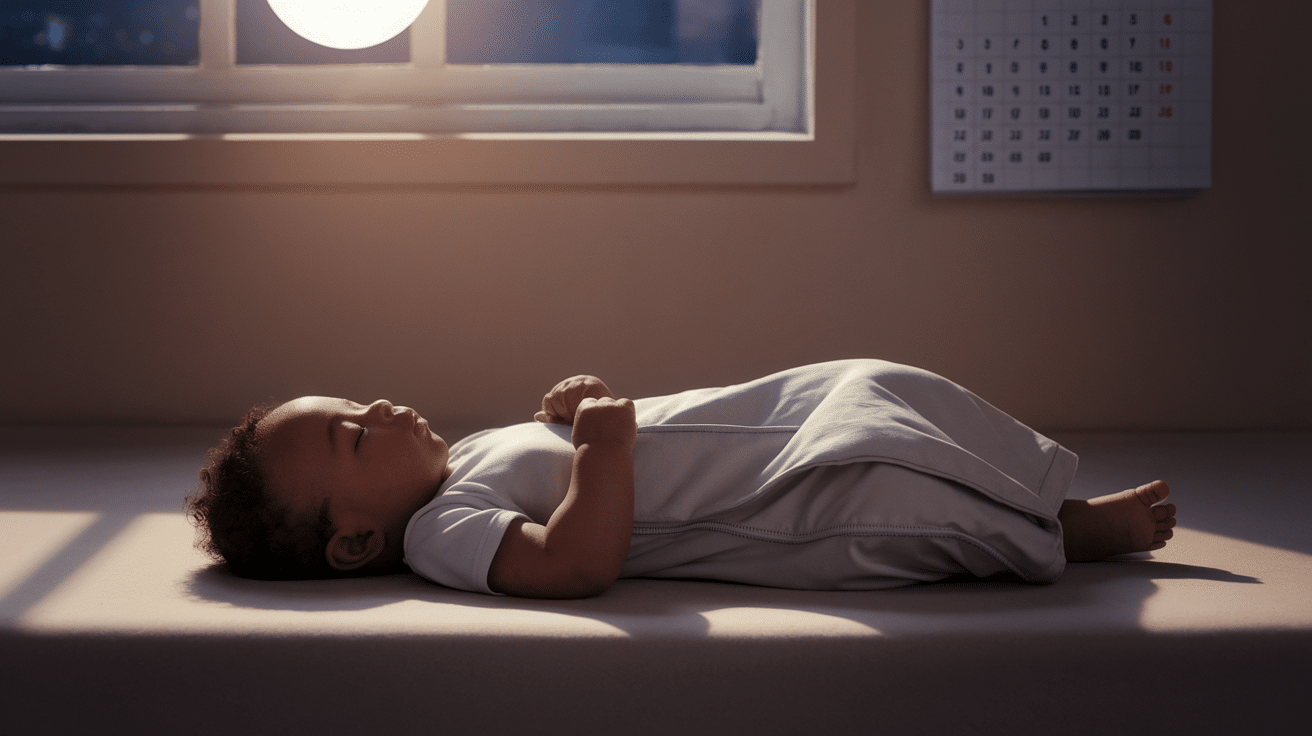
Here’s a rule that makes everything easier: dress your baby in clothes similar to those you wear to bed, plus one light layer.
If you sleep in pajamas under a light blanket, your baby might wear a onesie with a sleep sack. If you sleep in just underwear because it’s hot, your baby might need a light onesie.
Remember: “Assess, don’t obsess.” Check your baby occasionally, but don’t worry constantly. Babies are better at regulating their temperature than we often give them credit for.
Don’t forget that seasons change! Summer sleepwear won’t work in winter, and vice versa. Mark your calendar to reassess your baby’s pajamas when the weather shifts.
Is Your Baby Too Hot or Too Cold?
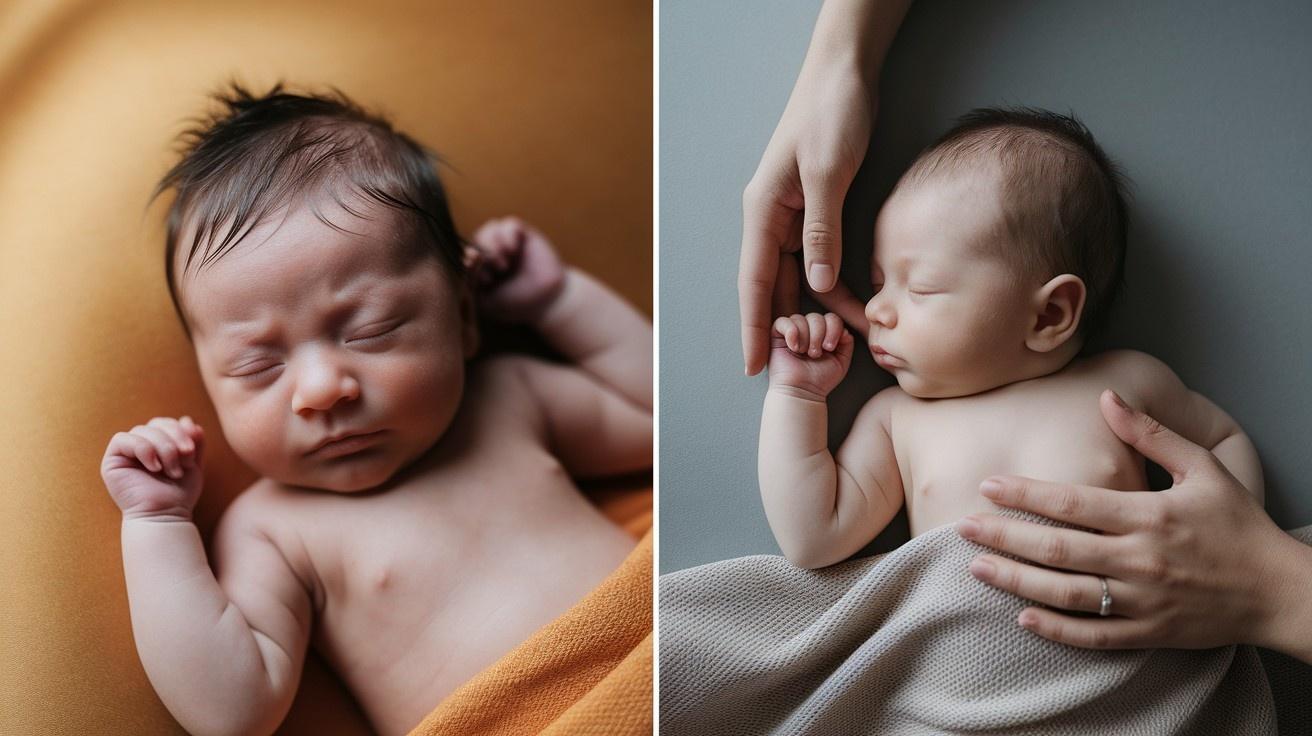
Wondering if your baby is comfortable? Here’s how to tell:
- Signs your baby is too hot:
Signs your baby is too hot include a sweaty neck or damp hair, red and flushed cheeks, or skin that feels clammy to the touch. Always check your baby’s chest, back, or tummy rather than hands or feet, and if you notice these signs, remove a layer, lower the room temperature, or switch to lighter fabrics. - Signs your baby is too cold:
Signs that your baby is too cold include a chest, back, or tummy that feels cool to the touch. The torso is a better indicator than naturally cooler hands and feet. If you notice these cool core areas, add an extra layer or use a warmer sleep sack to keep your baby comfortable throughout the night.
Here’s why: hands and feet aren’t reliable indicators. Babies naturally have cooler extremities, especially when sleeping. Always check their core (chest, back, tummy) instead. If your baby feels cool in these areas, add a layer or use warmer fabrics.
The Art of Layering: From Newborn to Toddler
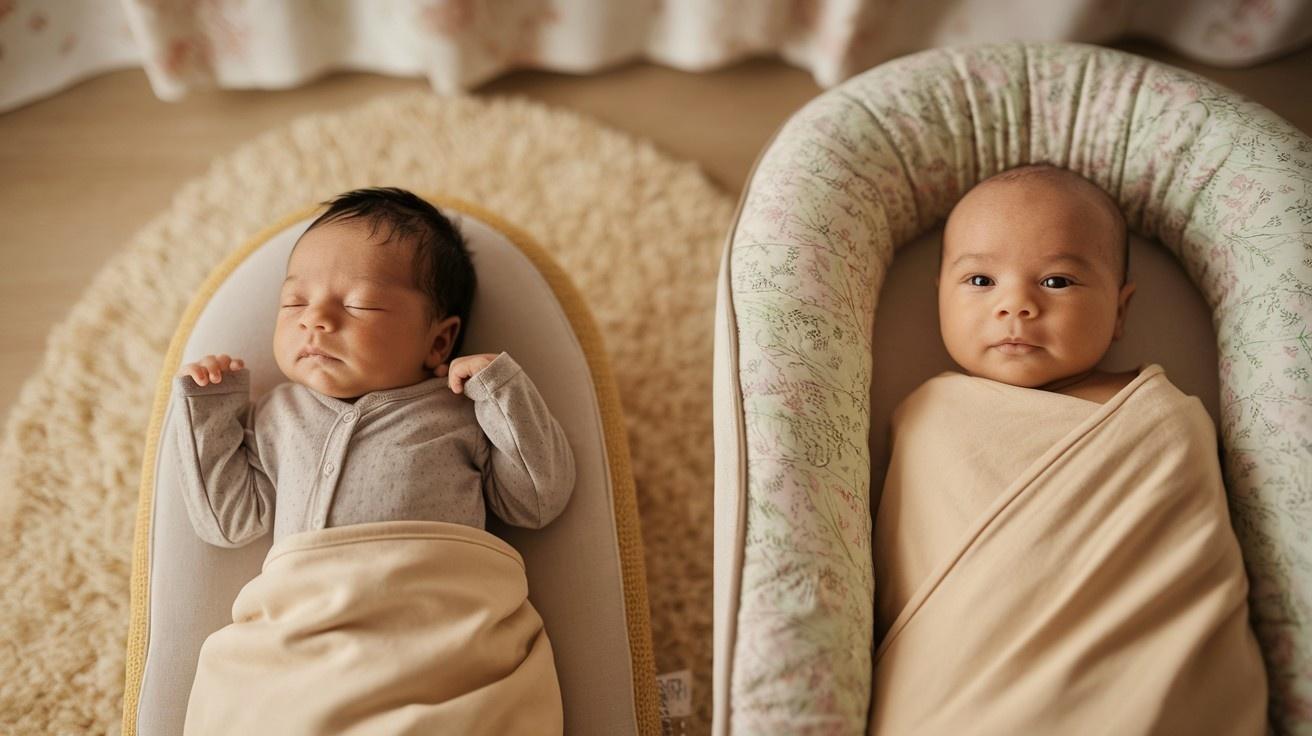
Newborns need more help staying warm than older babies. They’re still figuring out how to regulate their body temperature.
For newborns: Dress them in one more layer than you’re comfortable with. If you’re cozy in a t-shirt, they might need a onesie plus a light sleep sack.
For older babies (4+ months): They’re better at regulating their temperature. You might notice they need fewer layers as they grow.
Here’s something important: Never put loose blankets, hats, or other items in the crib. These pose suffocation risks. Instead, use sleep sacks or wearable blankets to provide extra warmth safely.
The Truth About Babies and Hats
Should your newborn wear a hat to sleep? The short answer is no.
While nurses might put a hat on your baby right after birth, this is only for the first few hours of life. Once you’re home, hats should only be for outside wear, not for sleeping.
Why? Babies release heat through their heads to regulate their temperature. Covering their head during sleep can lead to overheating. Plus, hats can slip off and become a suffocation hazard.
Can You Trust Your Baby Monitor’s Temperature Reading?
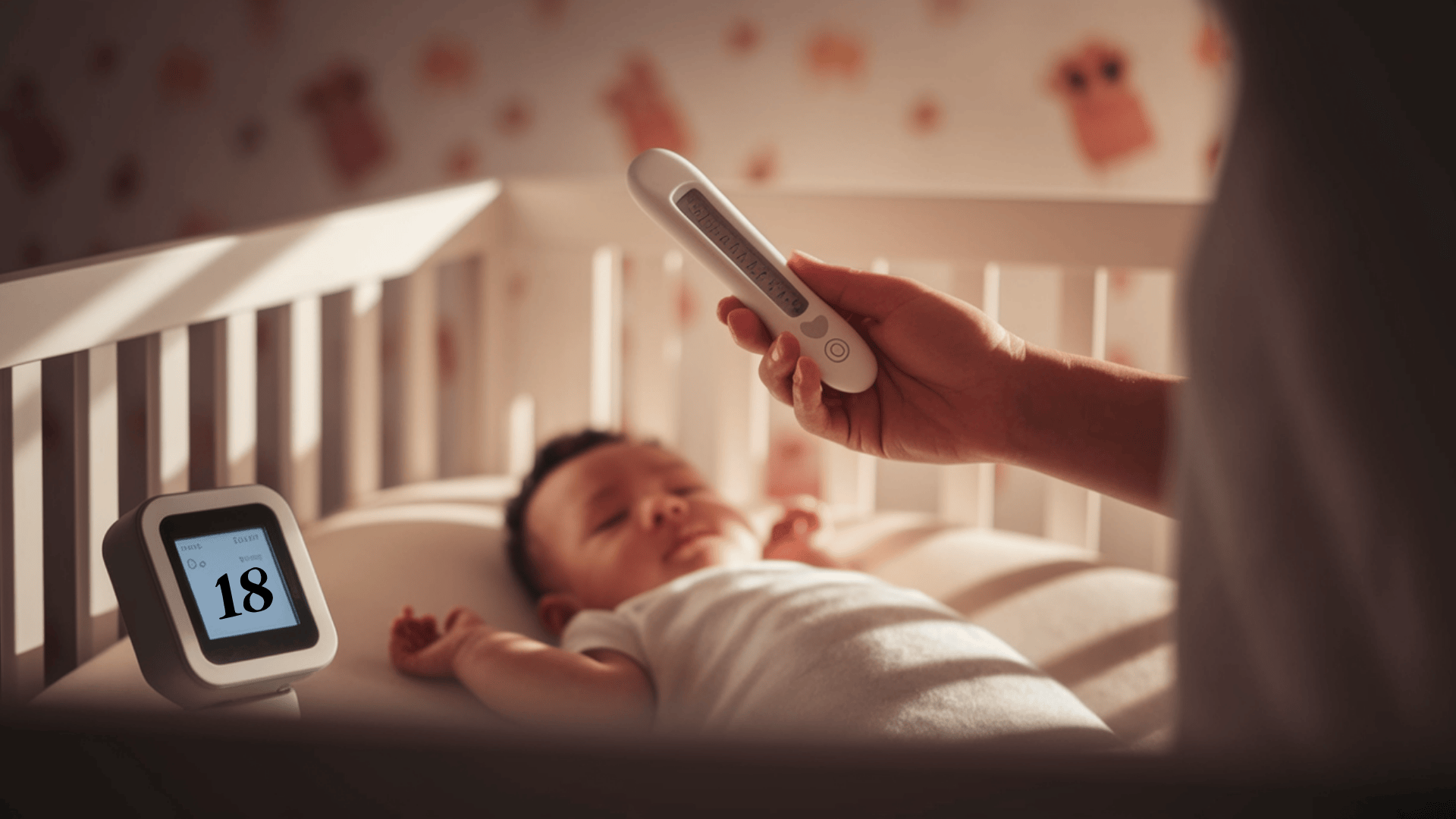
Many baby monitors show room temperature, but don’t rely on this reading alone.
These sensors can be inaccurate, especially if the monitor is near a window, heat vent, or electronic device. They might show the temperature where the monitor is, not where your baby sleeps.
Pro Tip: Use the monitor reading as a general guide, but always check your baby’s core temperature with your hand to know for sure if they’re comfortable.
Safe Sleep Basics: Beyond Temperature
While we’re talking about sleep, let’s review some essential safety guidelines:
- Place baby on their back to sleep every time
- Use a firm, flat mattress with a fitted sheet
- Keep the crib free of pillows, blankets, stuffed animals, and bumpers
- Room-share (not bed-share) for at least the first six months
- Use a pacifier for sleep (once breastfeeding is established)
- Keep the room smoke-free
These practices dramatically reduce the risk of Sudden Infant Death Syndrome (SIDS).
When to Stop Swaddling?
Swaddling can help newborns feel secure, like they did in the womb. But there’s a catch: once your baby starts trying to roll over (usually around 2-4 months), swaddling becomes dangerous.
Why? A swaddled baby who rolls onto their tummy can’t use their arms to push up or roll back, increasing suffocation risk.
When your baby shows signs of rolling, it’s time to transition out of the swaddle. Try:
- Swaddling with one arm out, then both
- Using a transitional sleep sack that allows arm movement
- Switching to a regular wearable blanket
Choosing the Right Sleepwear
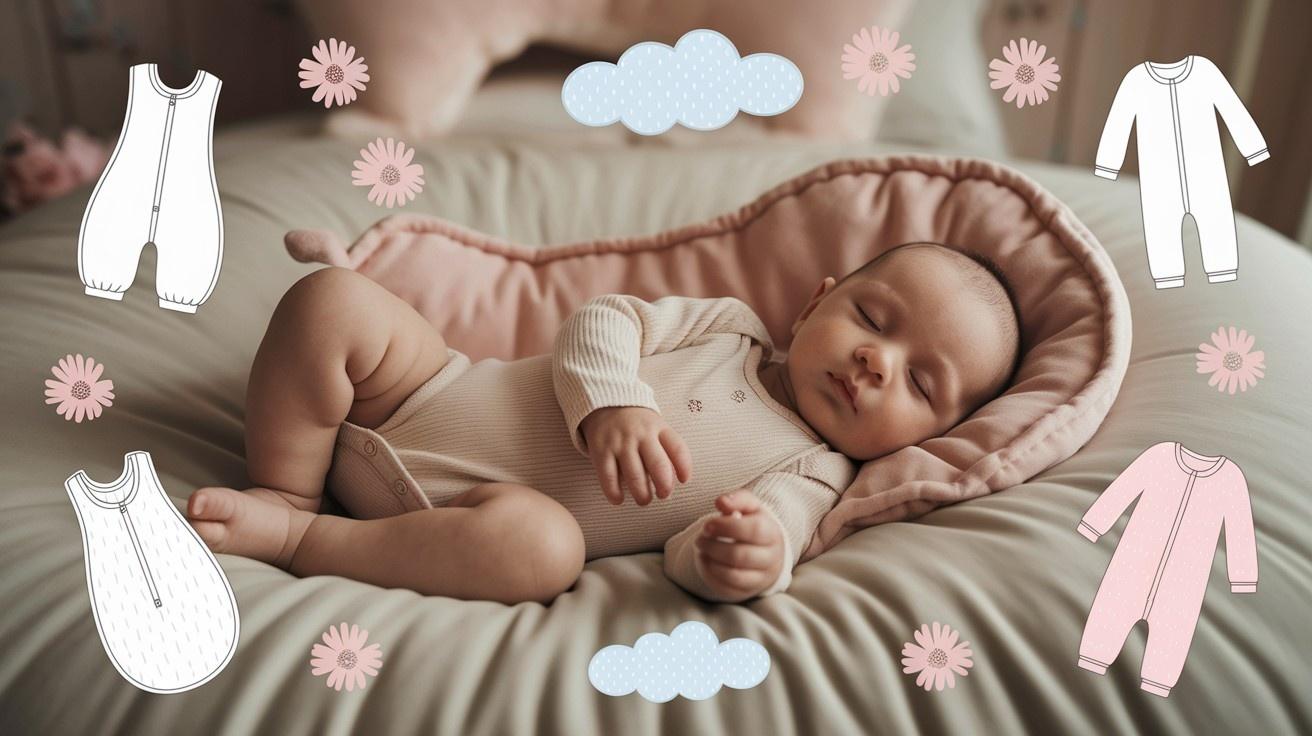
Not all pajamas are created equal! Here’s what to look for:
TOG Ratings Explained
TOG stands for Thermal Overall Grade. It tells you how warm clothing is. The higher the TOG, the warmer the garment.
- 0.5 TOG: For hot weather or warm rooms (75°F+)
- 1.0 TOG: For moderate temperatures (70-74°F)
- 2.5 TOG: For cooler temperatures (65-70°F)
- 3.5 TOG: For cold weather (below 65°F)
Best Fabrics
- Cotton: Breathable, natural, great for sensitive skin
- Bamboo: Super soft and helps regulate temperature
- Fleece: Warm but can cause overheating, so use carefully
Practical Features
Look for pajamas with:
- Zippers for quick diaper changes
- Two-way zippers that open from the bottom
- Snaps at the legs, not tiny buttons
- No loose strings, ties, or decorations that could come off
Pro Tip: Buy sleepwear in the next size up if you’re between seasons. You can roll up sleeves temporarily, and your baby will grow into them quickly!
Common Mistakes to Avoid
Even the most careful parents make these errors:
- Using too many layers “just to be safe” (risking overheating)
- Dressing babies in adult-style pajamas with loose parts
- Keeping the room too warm because it “feels right”
- Checking hands and feet instead of the chest to gauge temperature
- Using blankets instead of sleep sacks for extra warmth
The Bottom Line: Trust Your Instincts
Creating the optimal sleep environment for your baby involves maintaining an appropriate room temperature, dressing your baby in suitable layers based on the season, and monitoring their comfort through their chest or back temperature—not their hands or feet.
Remember to use sleep sacks instead of loose blankets, avoid hats during sleep, transition from swaddling when rolling begins, and choose appropriate sleepwear with the right TOG rating for your room temperature.
By following these guidelines and avoiding common mistakes like overdressing your baby or keeping the room too warm, you’ll help ensure your little one sleeps safely and comfortably through every season and developmental stage.
If you’re interested in more informational content on mothers and babies, feel free to click here and investigate other blogs that you might enjoy.
